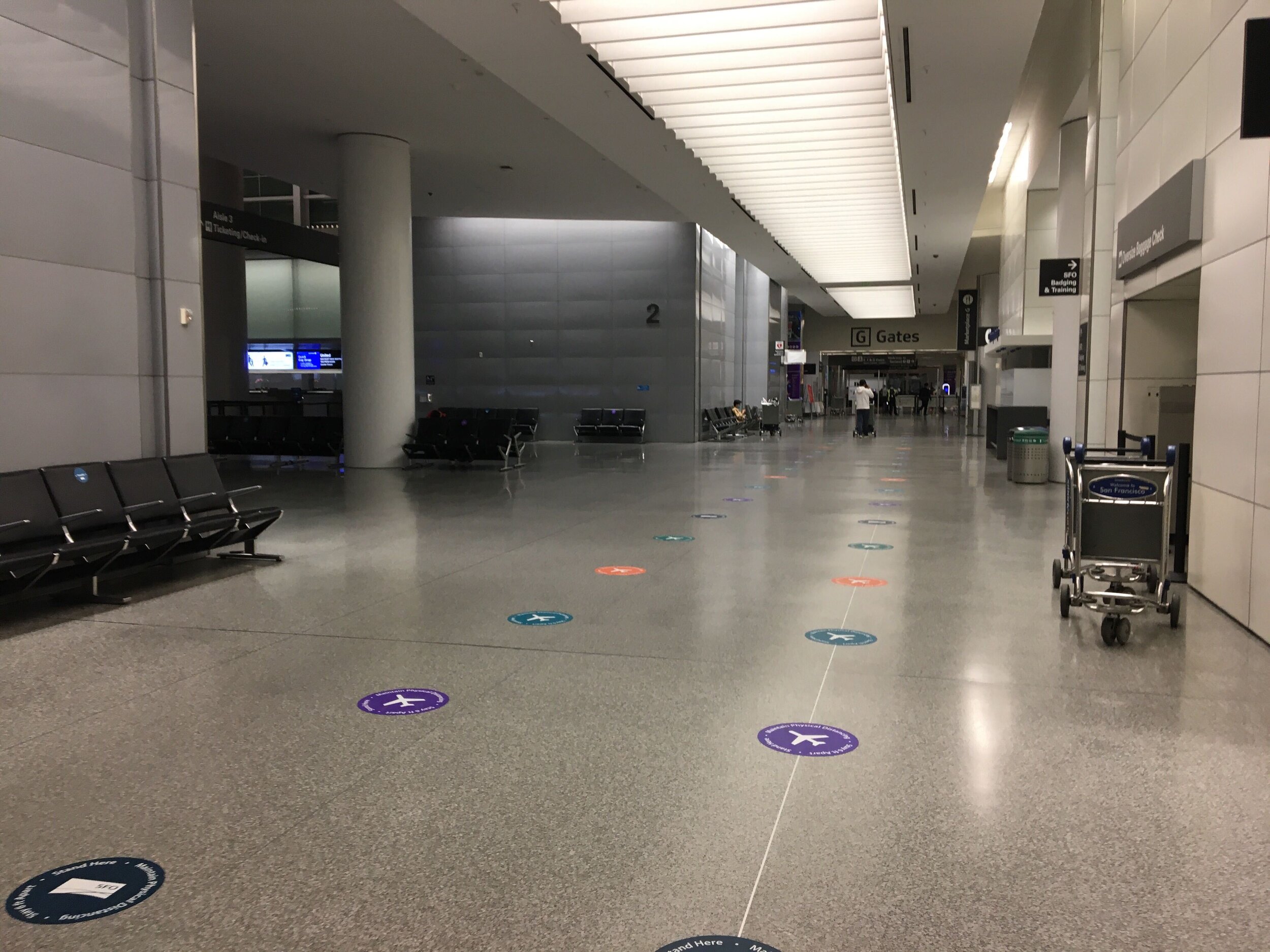Tools: Figma, CAD, Keynote, iMovie
Type: Group Client Project
My Role: User Research, Brainstorming, Interaction Design, Prototyping, Movie Making
Duration: 10 weeks (09/2020 - 11/2020)
Overview
One of the top concerns reported by both IATA data and user research conducted by our team was the fear of contracting COVID-19 when in a crowded space throughout their airport journey. In particular, we noticed that a subset of travelers, those who would only travel for emergencies, were the most anxious about crowding during their airport journey. For this reason, our team concluded that our product opportunity is to reduce crowd-based anxiety among emergency reasoned airport travelers.
Final Design
Design Process
01. Identify Design Opportunity
Our initial problem statement is very broad, we collaborated with TU-Delft and SUTD to improve air travelers airport travel experience during COVID-19. As we started our research, we thought users who loved to travel would want to bring back the social element of travel. Through our user research we found that leisure travelers tended to avoid flying during COVID-19 because of fear and anxiety around crowded areas to, from, and within the airport. Users noted increased anxiety around their airport experience. We began to focus on reducing anxiety, information sharing and community building, rather than the social element of traveling.
Preliminary User Research
We conducted initial user interviews with 4 recent travelers to understand their journey and pain points. Due to COVID-19, I conducted interview through online meeting.
I also asked some travelers to take photos of the SFO airport to help us to better understand the real situation of the airport during the COVID-19 period.
User Journey
Based on preliminary user interviews, I made user journey map
Opportunity
We elected to focus on reducing stress caused by crowding among travelers, as these were two common themes gathered from our user research. We narrowed our opportunity by defining our target user as emergency-reason travelers. We defined emergency-reason travelers as a group of individuals who are concerned enough about COVID and their personal safety that they have decided not to fly, but for some external reason are being forced to travel. Emergencies could include family illness, immigration or visa issues, pressing work concerns or legal matters. We focused on this population because they are likely to have a high level of stress regarding COVID and the airport experience. We further narrowed the scope of our opportunity by focusing on the boarding process. Boarding was identified as a key area of crowded and no social distancing concern among travelers. Thus, our product opportunity is
“Reducing crowd-based anxiety among emergency-reason airport travelers during boarding”
02. Understanding and Analysis
During this phase, we employed additional one-on-one interviews, creating stakeholder maps, empathy maps, positioning maps and personas, community based participatory research, as well as online research to better understand the problem and opportunity.
We interviewed passengers that have already traveled, both for non-emergency related and emergency related reasons, as well as employees that work at the airport. We asked the passengers that have flown already to tell us about their journey through the airport, and report any pain points they could remember, which we then used to create customer journey and empathy maps.
Key Stakeholders
The high-level spectrum of stakeholders include airport owners, service contractors, travel dependent cities, airport staff, and anyone traveling.
We used stakeholder map to see what kind of people we could potentially impact the most. We identified key stakeholders as airport owners, airline companies, flight crew, and emergency travelers.
Empathy Maps & User Personas
User Research Insights
Key Competitors
Competitors Positioning Map
Main Product Requirements
After all the analysis, we listed 50 product requirements. We discussed and selected five requirements that we felt were key to creating a successful solution, which combines all of the major requirements.
The product must:
Provide an aspect of psychological safety
Be easy to use
Provide complete and accurate information in order to give the user a feeling of knowledge and informed decision making
Be usable and accessible for all populations
Be safe for users and surrounding populations



























